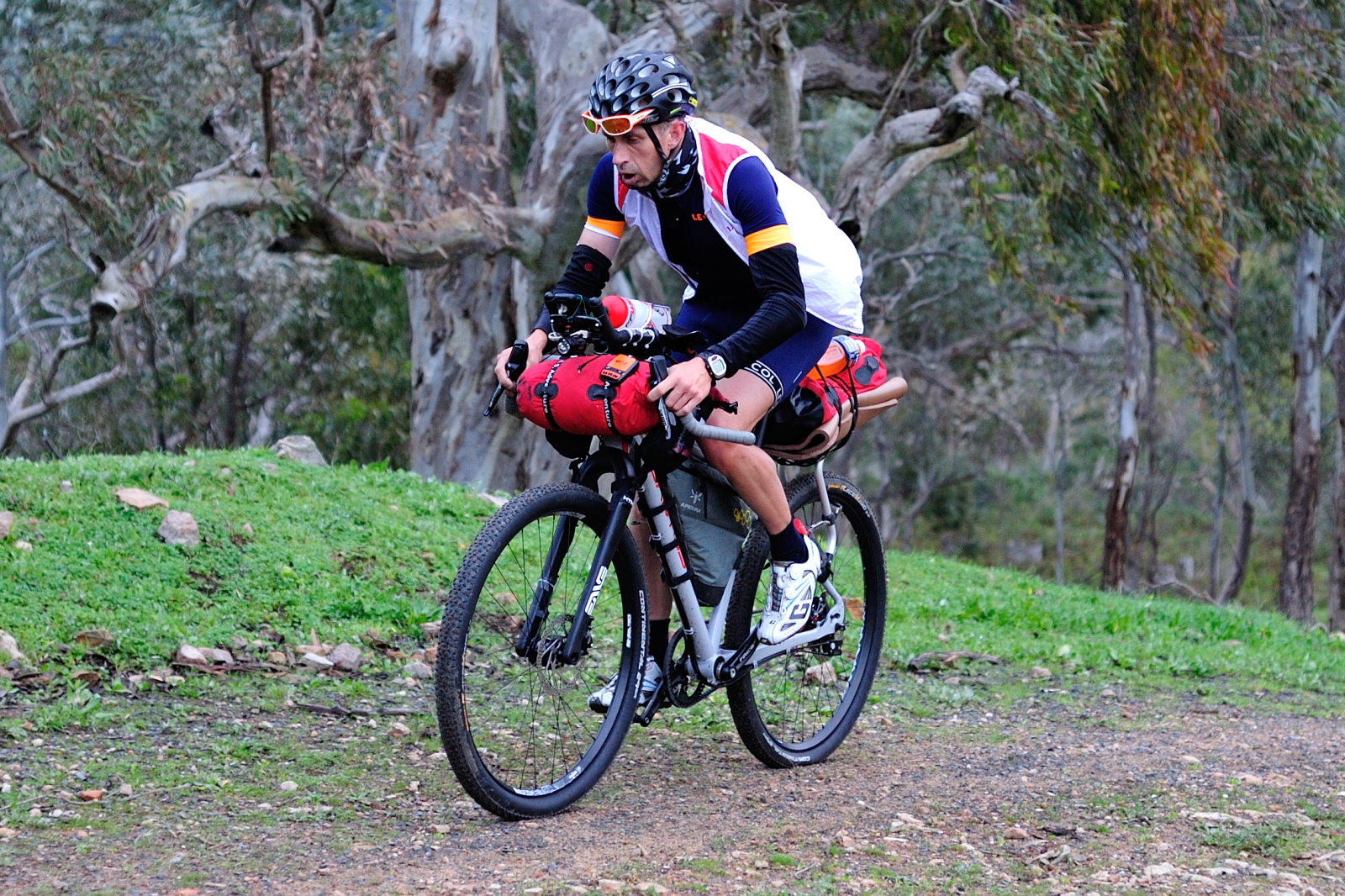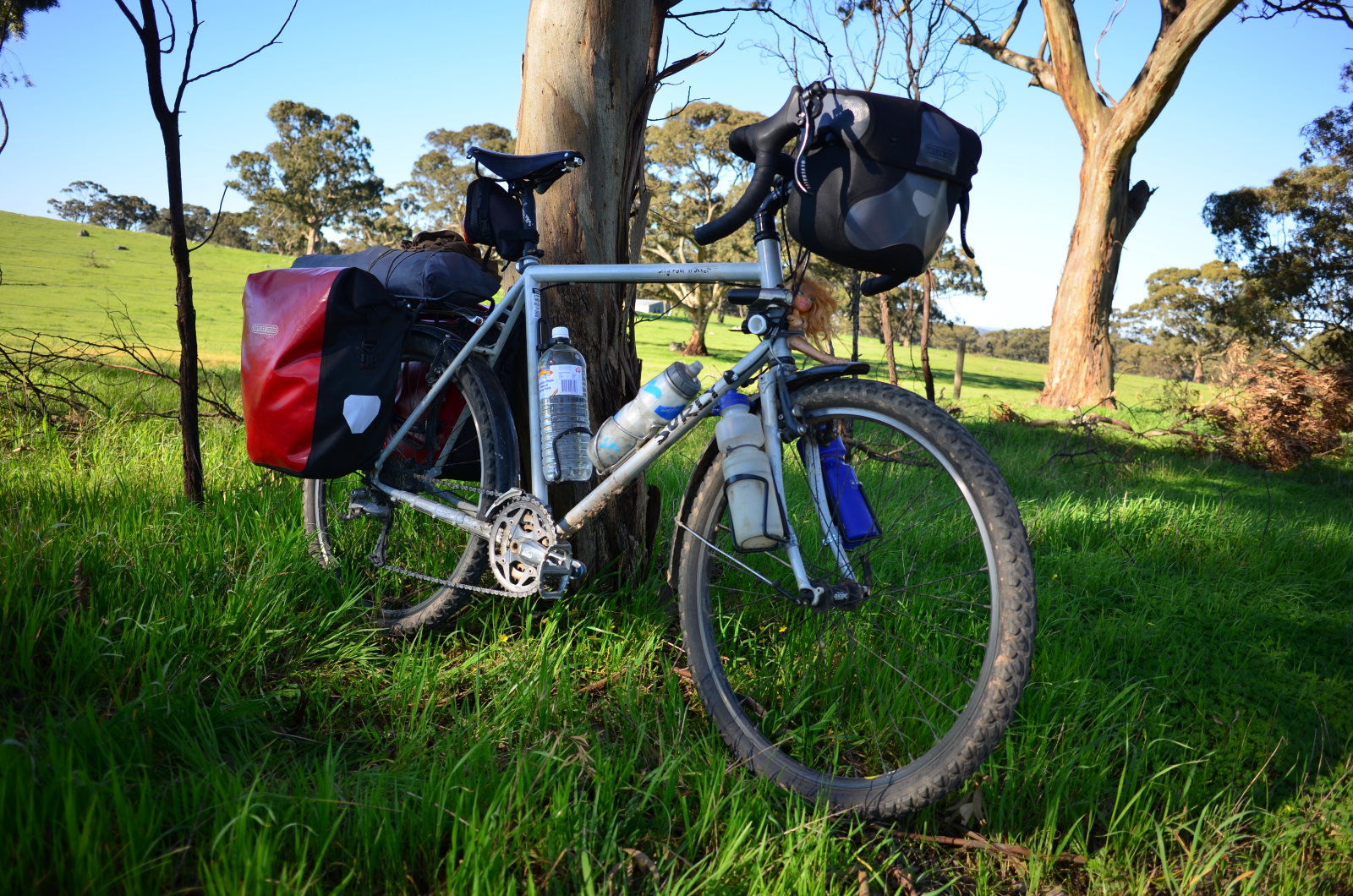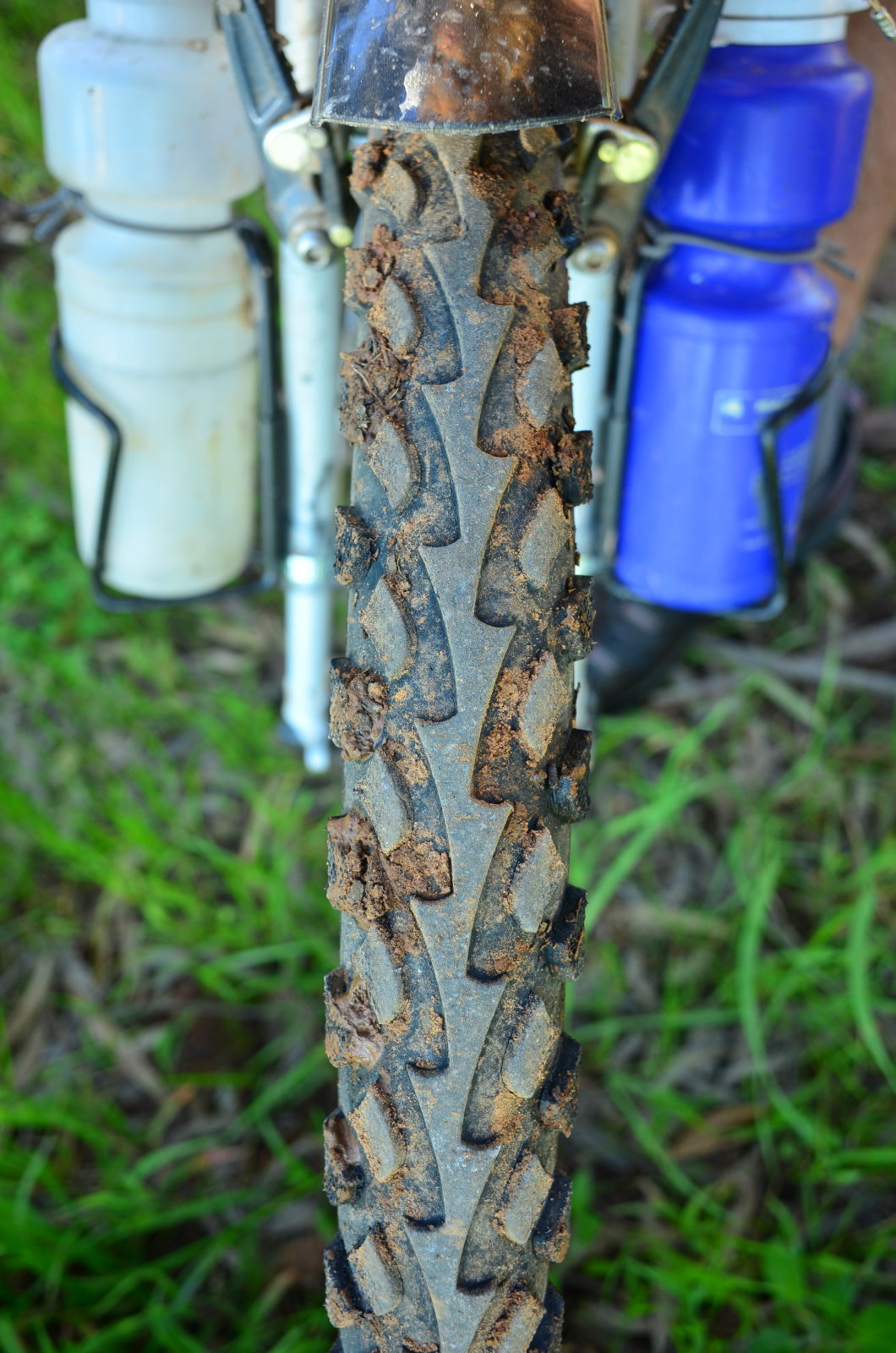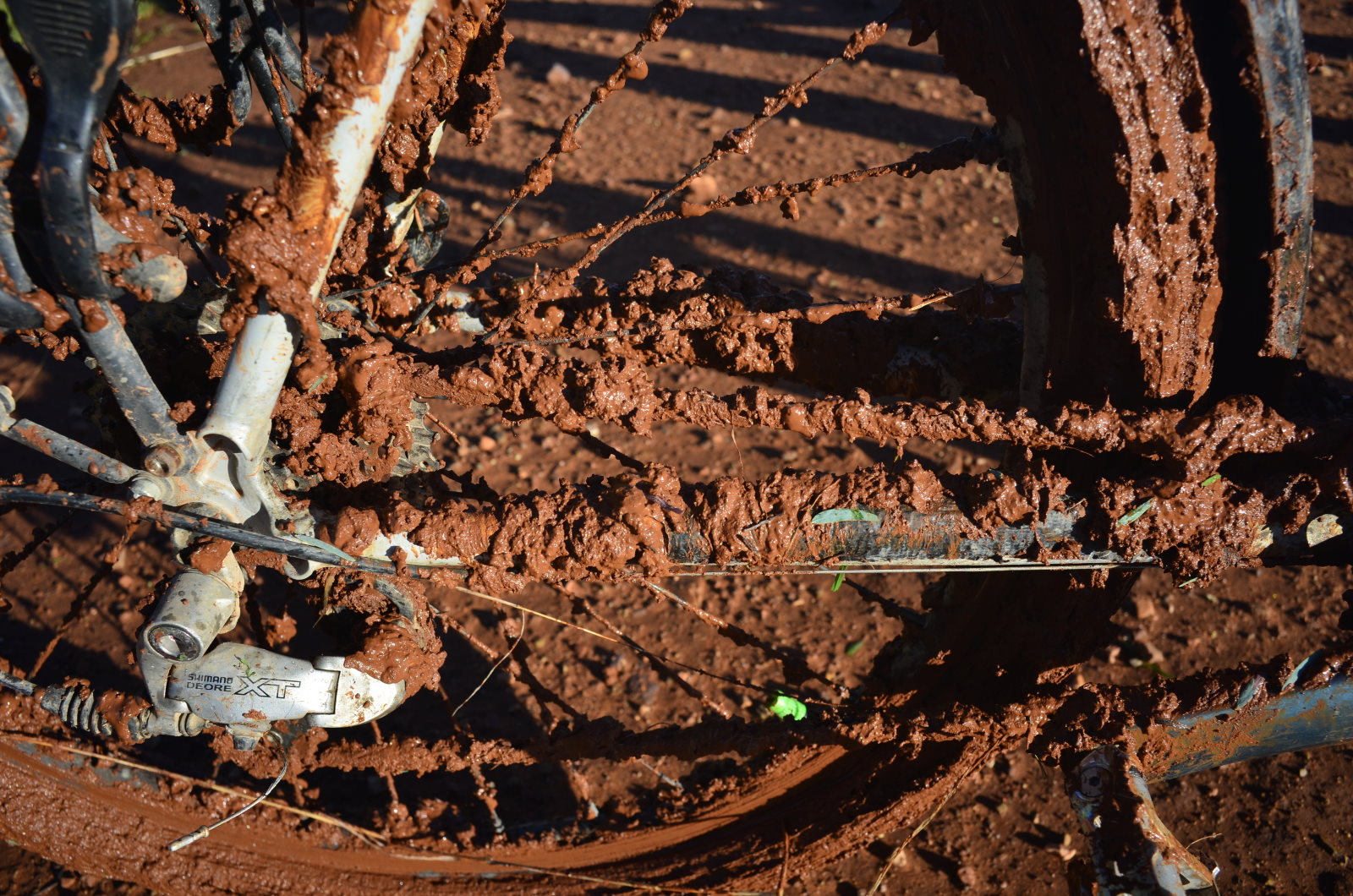Gear and Tips
So – most of this stuff is obvious, and all of it is just personal observation, but it does cover some issues and questions that I would have liked to know before I rode the trail.
Questions and Comments
I’m happy to help with questions when I can… I don’t often have up to date information on conditions, but sometimes I hear from people who have just ridden bits and pieces, so it’s […]
This is very personal, and it depends so much on whether you’re touring, bikepacking, or credit-carding. The Mawson is great because it accommodates all these options.
The official Trails SA Maps call it an “off-road” route, which, with due respect, it’s not. It’s just about all on roads, guys. They are generally gravel and dirt roads, but they’re roads. The Trails SA website is more accurate: it says, “the trail includes little-used country roads, State forest and national park fire trails, farm access tracks and unmade or unused road reserves. The trail avoids traffic and bitumen roads and leads cyclists into the remote areas of the Ranges.” That’s a fair call.
So – how to see it?
I’m a credit-carding kind of guy. My idea of “unsupported” is having to pour my own wine at dinner.
I like to travel solo, using a combo of camping and staying in country pubs, which generally charge $35 – $50 for a single room with no ensuite, and including helping yourself to breakfast (i.e. several bowls of Nutri-Grain and many pieces of toast) in the mornings. This means I usually only need to carry water and snacks for the day, and some regular clothes so I’m not hanging around the bar in bike kit, scaring the locals.
Tourers, of course, carry everything, and are a law unto themselves. I toured for a month a long time ago, and I did a couple of months riding from Paris to Barcelona in 2017. Even so, I figure I know less about this than just about anyone who owns a set of panniers, so I won’t comment. I did take my tent, bag, mat and Trangia up the Mawson in 2016, but man it was heavy. I think I’ll mainly stay in pubs/cabins if I can, and take some lightweight emergency/bivy gear with me to give me more options. I am planning a solo self supported trip of the Munda Biddi for June 2018 though, so we’ll se how that pans out.
I will say something about bikepacking, because it has become so trendy recently, and it’s an ideal way to see the Trail. Bikepacking bikes look really cool, and the bags look really cool too. Bikepackers themselves look badass whereas tourers can look kinda dorky.
Bikepackers with mud all over them look even more badass. I think it’s a great idea, and I WANT (note capitals) a bikepacking bike with a Rohloff like the one Gunther Desmedt rode in the Race to the Rock 2016. Here’s a link to his gear list BTW.
Another great thing about the Mawson is that you can can do bits and pieces as you choose.
This is especially true if you live in Adelaide. Of course if you have a car, you can drive your bike to anywhere, so there’s not much point in me talking about that. I’ll concentrate on the train and bus options for visitors and locals. These are my favourites in any case.
The Train
A great way of getting out of Adelaide to the north and missing shitty roads and traffic is to take your bike on the train to Gawler. This takes about an hour and cost $3.40 (off peak) or maybe $8 peak, because you then need to buy a concession ticket for bike too. From Gawler you can ride to Tanunda on a bike track (Jack Bobridge) in another hour, and pick up the Mawson to Kapunda from there. This is also a great way of getting back to Adelaide at the end of a ride if you don’t want to spend a whole day coming back down through Lobethal and the steep bits.
The Bus
Private bus companies will take you further afield. Premier Stateliner has a daily service that goes north to Pt Augusta, so you can jump off along the way and ride east to pick up the Mawson (say, through Germein gorge or across to Wilmington) Genesis Coach Services runs a weekly service up through Melrose as far at Blinman, so you can go all the way up with your bike and ride down.
It’s not about the bike (much). But if your bike’s not up to the job, then you’re not riding, you’re walking. And if you’re walking 50km to Wilpena, that could be a problem.
Bike selection
This worried me before I’d ridden the trail – now it doesn’t. Even though I’d done the toughest sections already on my bike and it was fine, I thought – will this bike be OK for the whole trip? Is it OK not to have suspension? Do I need a MTB? Etc etc. Err – relax Dave, your bike is just fine.
BUT spending way too much time thinking about bikes is what some of us do.
Here you see my bike on my last trip; two panniers and a tent, as I’m carrying camping gear.
That little Ortlieb bag on the front is great BTW. It’s waterproof, tough, and it clips on and off so you can easily take your camera and valuables with you. I have two mounts to I can leave basic gear in it and switch it between bikes. Oh – and I love mudguards (fenders to our American cousins). When it’s wet, and at the end of the day I slip off the bike nice and clean to enjoy a beer, people without mudguards are busy scrubbing the mud out of their kit. Your choice of course, but I know what I’d rather be doing.
My bike is just about perfect, and I take no credit for that. It’s the first bike I built and I did it just because I had a 26” MTB in good condition that I never rode, and I thought it was a shame to throw it away, so I bought a Surly Long Haul Trucker frame and transferred the bits across. Then I discovered why people love these LHT frames so much.
As I rode more I discovered that flat bars hurt my wrists, so I swapped it over to drop bars, and Jake from Treadly Bike Shop put me on to these Gevenalle shifters so I could lose the downtube shifters what were giving me the shits. Result? Perfection this side of a Rohloff Santos like Gunther’s.
So what about your bike? CX? Gravel Grinder? 29er hardtail? Personal preference mes amis.
Remember this though: Through axles, 1x, tubeless, 650B vs 700 do not matter a pinch of shit when you’ve crashed your bike or something broke and you are in pieces by the side of the road crying salty tears. The best bike is the one you’re riding. I’d rather be riding a 2×5 steel 80s MTB clunker than looking at a broken Bombtrack Beyond XPD and wondering how to get it and me back home.
This was another thing I sweated for no reason. All you need is tough tyres that can handle dirt. I have 32c Schwalbe Marathons on my adventure bike and they are fine on the Mawson except in mud. They weigh a ton and they are as hard as buggery unless you run them at low pressures, but it seems to be true – they don’t puncture. Ideally I’d say 700c x 40-45 or 26″ x 1.9 are the way to go, based on what I’ve seen smart people using, but, again, personal preference.
I tried Marathons on the Surly but I got 1.6in instead of 1.9. For some reason they were MURDER to fit and I smashed the bead getting them off. I knew I would never be able to fit them on the trail so I needed something else. I tried Conti Contacts and they were good on bitumen but absolute shit on dirt. If it’s possible to go below zero on a scale of 1-10 for grip they did it. I spent a lot of time lying down.
Then I tried these Schwalbe Land Cruisers which are cheap beaded tyres and they’re great. I do like having a solid ridge down the middle because I hate a buzzing noise on hard roads, and in 1.9 they are good on dirt. When they wear out I’ll look for something similar but with folding bead.
UPDATE: I just bought some Marathon Mondials. They are expensive ($95 ea) but they have a folding bead and they are A DREAM TO FIT (on my rims, anyway, which are usually a complete PITA to fit tyres to.) They are NOT very puncture resistant IMHO (I got two flats at once on my first serious dirt outing. I think I’ll use Slime tubes from now on.) The main thing is that I’m confident that if I get a flat or tear I’ll be able to get them on and off easily on the trail. This extra confidence is worth the money, even if they don’t end up lasting for a million km like they’re supposed to. (The cheapo Land Cruisers wore their tread out on the back at about 3500 (?) km – You can get them for about $25 though, so there’s not much to complain about)
UPDATED UPDATE – I busted my wheels touring in Europe, so my bike now has some new wheels that are wider than the last ones. I think this will give me the option to try Marathons again, as they should be easier to fit. I’m using my bike as a daily commuter – and those Mondials are SLOW on tarmac.
Obviously, your bike has to be in good nick. My advice? Don’t be a cheapskate. This is tough for me to say because when it comes to bikes I AM a cheapskate. I used to pull my bike to bits all the time when I was a kid. I’d repack bearings in the pedals for no reason etc. and I flatter myself that I can still do most of the stuff a bike needs except things like straightening forks and making wheels. I thought “damn – why pay $200 for a strip and check, and then pay retail on top of that for parts when I can do most of it myself with a bunch of cheapo bits I got on special from Wiggle?” I think the answer to this is, “because a good mechanic can do things three times faster that I can, won’t miss things, and won’t stuff it up.”
On the other hand, working on your bikes gives you knowledge and awareness of how things should function, and this makes you sensitive to problems that people who don’t know about bikes would miss until it’s too late and the problem is worse. Ultimately, you’re responsible for what happens to your bike on the road. No point whinging to your Local Bike Shop when they’re 1000km away. (I recently spoke to a guy in Spalding who was pissed off with his LBS because he’d had a pre-ride service and the gears weren’t changing right: he’d ridden all the way down from Darwin with miss-adjusted gears because he couldn’t fix them!)
I got BMCR in Adelaide to do a service on my bike before I rode the Outback Odyssey in 2015 and then had another one done as soon as I got back, because I knew I’d be slack if I didn’t get it done straight away. I’m glad I did this, and I would do it again.
You can’t avoid mechanical problems entirely – but you can reduce the chances of them occurring, and the money seems unimportant when you’re a million miles from anywhere and you really don’t want your bike to break.
On the trail: do a daily check. It’s easy to forget this. If you forget – stop and do it. Check your wheels are properly in and tight, check your brakes, headset, BB, spokes (I admit I don’t check spokes as often as I should). Lube your chain every day. Check your panniers are secure – if they get bumped off and go into the spokes you’re fried.
Mud is part of the Mawson. The times to ride the Mawson are spring and autumn because summer is too hot and winter is too wet.
At these times of year there’s a pretty high chance you’ll get rain. Most of the trail is fine. The roads are gravel and they drain. Some bits though, are not gravel, they are just dirt or clay. This stuff can turn to mud. And I don’t just mean mud, I mean sticky, shitty, horrible mud that clogs everything. Your wheels will not turn, brother.
If you keep riding you can snap a derailleur. THIS MUD IS TOXIC SHIT AND TO BE AVOIDED.
I have suffered this mud. I will never suffer it again if I can avoid it. If trying to ride through this mud meant saving the life of my wife and daughters I’d say, “well, they’ve all had good lives.”
MAYBE it’s good to have experienced it once, just to say you have done it, but if you go back for another dose then you are stupid. The good thing about the lower parts of the Mawson is that there are generally alternatives. So when you see the mud, GO BACK.
For those who may not know, In Australia we have native magpies, and when they are nesting in spring (say, August – November) these birds will swoop riders when they go past. This can be unsettling, but it is not dangerous in itself unless they get you in the eye.
Here’s a great example along the Bundaleer channel, Sept 2016 from Ben Reading on his Race to the Rock ride.
I crunched the numbers on a recent ride in September. Over two days riding solo I was aware of being swooped well over 200 times by over 30 different magpies. This is a very conservative estimate. The actual number was a lot more but I want to be certain I’m not exaggerating.
On sunny days you’re more aware of it because you can see their shadows when they swoop you. When it’s overcast you’re not so aware – unless you’re riding with someone and you can see the swoops they get as well.
Of these swoops I only got a few taps on the helmet. I also got lots of this scary snapping noise they somehow do right by your ear.
The main danger from magpies is that, for example, when you’re negotiating some washouts at speed a swoop/snap/hit will freak you out and you’ll crash. Your’e not in danger from the actual magpies, so just get over it. Getting pecked on the ear hurts and might bleed, but it’s not too bad – as I said, eyes aside it’s mainly just a shock.
I do make sure I wear glasses though – because there are cases of a magpie taking out someone’s eye, and it’s best not to take chances. Wearing glasses is a bit of a no-brainer for many reasons really.
I respect magpies because they are small birds and I’m a big human yet they still have a go to protect their babies.
Magpies are very intelligent, and I’ve tried reasoning with them, explaining patiently that I am not interested in eating their babies, but this does not work. I do it anyway. Usually the first swoop is just a warning shot before they come back for a barrage, so sometimes I wave an arm over my head to stop them from hitting me. Some people stick cable ties on their helmets, and this may or may not work, but it is not an option if you have even the tiniest shred of self-respect.
If you want to listen to a nice half-hour segment about magpies from ABC Radio National – here it is
In late Sept 2016 I got some pretty close attention from some big brown birds of prey north of Wilpena. I think they were kites or kestrels, and nesting too, because it seemed to be pairs of them that were interested in me. Those mofos were big – they made maggies look like sparrows. I don’t reckon they wanted to attack though, but they did make their presence felt.
Mawson Trail by David Hume on Exposure



